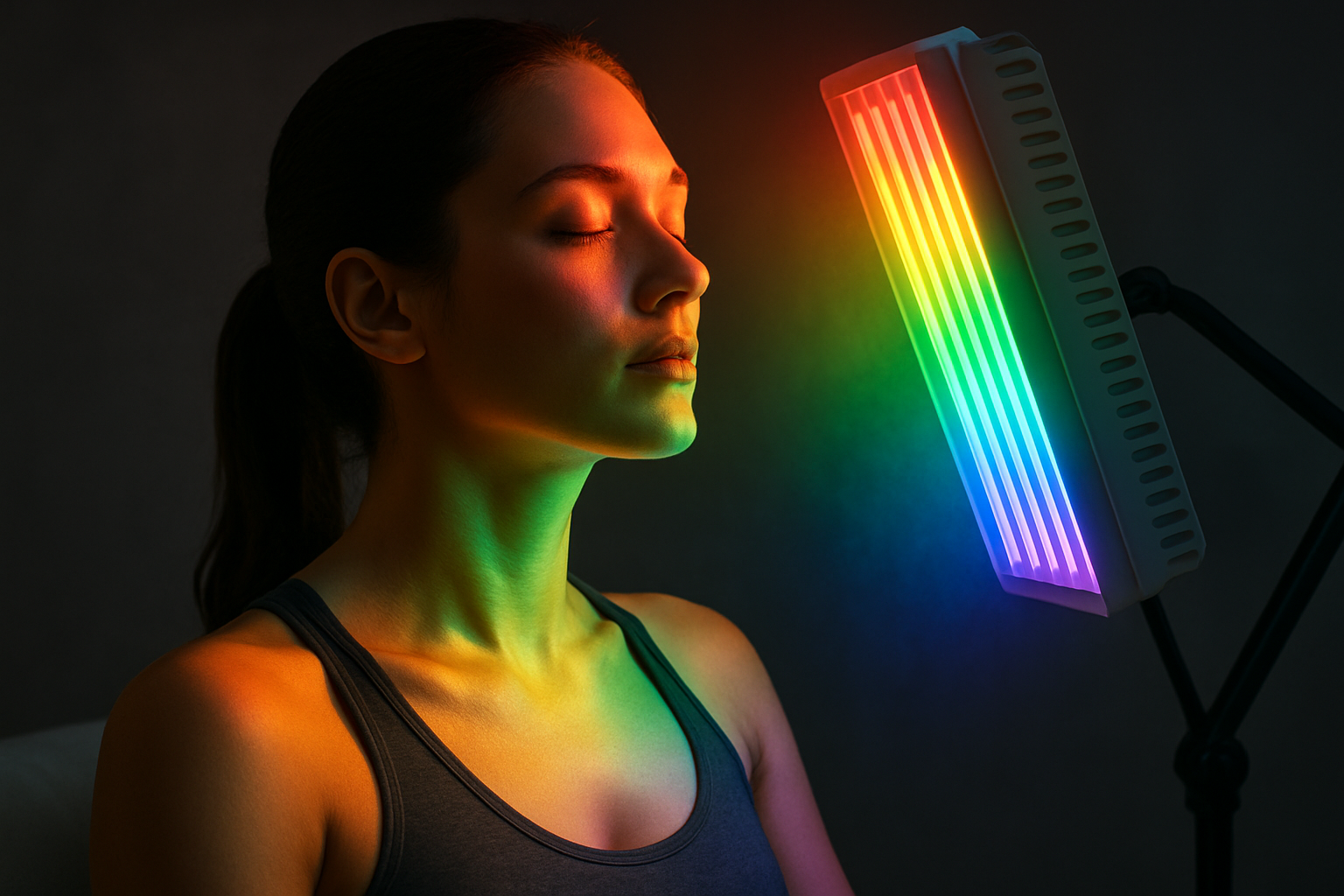Chromotherapy: The Spectrum of Wellness
In the ever-evolving landscape of beauty and fitness, a captivating trend is emerging that harnesses the power of color to enhance physical and mental well-being. Chromotherapy, also known as color therapy, is gaining traction as a holistic approach to wellness that integrates the psychological and physiological effects of different hues. This ancient practice, rooted in various cultures worldwide, is now being reimagined for modern lifestyles, offering a unique blend of science and sensory experience. As the beauty and fitness industries continue to explore innovative ways to promote health and vitality, chromotherapy stands out as a vibrant and promising frontier in the quest for balanced living.

In traditional Chinese medicine, color has long been associated with the five elements and their corresponding organ systems. For instance, red was linked to the heart and fire element, while green was associated with the liver and wood element. This holistic approach to health viewed color as a means to restore balance and harmony within the body.
The modern revival of chromotherapy can be attributed to pioneers like Edwin Babbitt, who published “The Principles of Light and Color” in 1878, laying the groundwork for contemporary color therapy practices. Throughout the 20th century, researchers and practitioners continued to explore the potential of color in promoting physical and emotional well-being, leading to its integration into various wellness modalities.
The Science Behind Color’s Impact on the Body
While skeptics may dismiss chromotherapy as pseudoscience, recent studies have begun to shed light on the physiological effects of color exposure. Research has shown that different colors can influence brain activity, hormone production, and even cellular function.
For example, exposure to blue light has been found to suppress melatonin production, affecting circadian rhythms and sleep patterns. This discovery has led to the development of blue light-blocking glasses and screen filters to improve sleep quality. Conversely, red light therapy has gained popularity for its potential to stimulate collagen production and accelerate wound healing.
Studies have also explored the psychological impact of color, revealing how different hues can affect mood, cognitive performance, and perceived physical exertion. This research has implications for both mental health treatments and athletic performance optimization.
Chromotherapy in Modern Fitness Practices
The fitness industry has begun to embrace chromotherapy, incorporating color-based elements into workout spaces and equipment. Innovative gyms and studios are experimenting with color-changing LED lighting systems that adapt to different phases of a workout, enhancing the overall exercise experience.
For high-intensity interval training (HIIT), energizing colors like red and orange are used to boost motivation and perceived effort. During cool-down and stretching sessions, calming blues and greens help promote relaxation and recovery. Some fitness centers have even introduced chromotherapy pods, where individuals can immerse themselves in specific color environments tailored to their wellness goals.
Wearable technology has also jumped on the chromotherapy bandwagon, with smartwatches and fitness trackers incorporating color-based breathing exercises and stress management features. These devices use pulsing colored lights to guide users through mindfulness sessions, leveraging the calming effects of certain hues.
Beauty Industry Innovations in Color Therapy
The beauty sector has been quick to adopt chromotherapy principles, developing products and treatments that harness the power of color. LED face masks have become increasingly popular, offering different colored light settings to address various skin concerns. Red light is often used for anti-aging and collagen stimulation, while blue light targets acne-causing bacteria.
Color-changing skincare products are another emerging trend, with formulations that shift hues upon application to signal activation or to provide a personalized sensory experience. These products not only offer functional benefits but also tap into the psychological aspects of color therapy, creating a more engaging and mindful skincare routine.
Spa treatments have also evolved to include chromotherapy elements, with some facilities offering color-infused saunas, steam rooms, and hydrotherapy pools. These immersive experiences aim to provide a holistic approach to relaxation and rejuvenation, combining the benefits of traditional spa therapies with the psychological impact of carefully chosen color schemes.
The Future of Chromotherapy in Wellness
As research in chromotherapy continues to evolve, we can expect to see more sophisticated and personalized applications of color therapy in both beauty and fitness realms. Virtual reality (VR) and augmented reality (AR) technologies hold particular promise, offering the potential for fully immersive color therapy experiences tailored to individual needs and preferences.
In the fitness world, we may see the development of smart workout clothing that changes color based on body temperature or exertion levels, providing real-time feedback to both the wearer and trainers. Beauty tech could advance to include AI-powered devices that analyze skin tone and condition to recommend optimal light therapy treatments.
The integration of chromotherapy into architecture and interior design is also likely to expand, with smart homes and workplaces incorporating dynamic lighting systems that adjust color temperature and intensity throughout the day to support circadian rhythms and overall well-being.
As chromotherapy continues to gain recognition in the wellness community, it’s important to approach it as a complementary practice rather than a standalone solution. When combined with proper nutrition, regular exercise, and other evidence-based health practices, color therapy has the potential to enhance overall well-being and add a vibrant dimension to our daily lives.
In conclusion, chromotherapy represents a fascinating intersection of ancient wisdom and modern science in the pursuit of holistic health. As we continue to explore the intricate relationships between color, mind, and body, this spectrum-based approach to wellness promises to paint a brighter, more nuanced picture of what it means to live a balanced and vibrant life.





